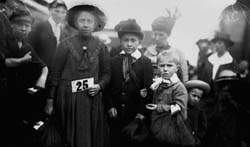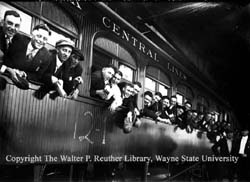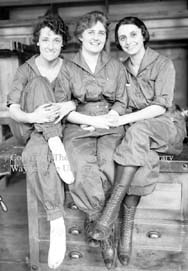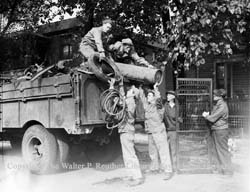 Soldiers collecting scrap metal for the war effort, September 26, 1942.
|
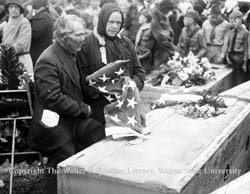 Funeral for the fallen of the 339th Infantry Regement, 1930. The World Wars changed America dramatically. The intervention by the United States in both conflicts secured its status as a true world power. With this great responsibility came a price, and America called on its citizens to serve. During both of the wars, Detroit, like every other city, did its share. Citizens participated in any way they could, through volunteer work with organizations like the Red Cross, to Liberty Bond drives. The wars changed the day-to-day life of most Detroiters dramatically. Air raid drills and blackouts were common. Many people took to growing their own food in private or community war gardens, gardens set in backyards and empty lots to supplement the dwindling amount of food available due to rationing. The large ethnic communities gave special support to the victims abroad through donations, fundraisers, and sponsoring families or children evacuated from war-torn Europe. The new century brought a new style of mechanized warfare, and few other cities could have been better suited to the task of war production than Detroit. During the First World War, Detroit was a major supplier of munitions and supplies. During the Second World War Detroit quickly became the centerpiece of the “Arsenal of Democracy”, by landing 29 billion dollars in government contracts and leading the nation in war production. Factories, both large and small, from auto to adding machine, were retrofitted to produce munitions, parts, supplies, or heavy machinery such as tanks, transport trucks, and B-24 bombers. Workers from across the country flocked to Detroit to work in the war industry, and the population and prosperity of the region boomed. |
||


